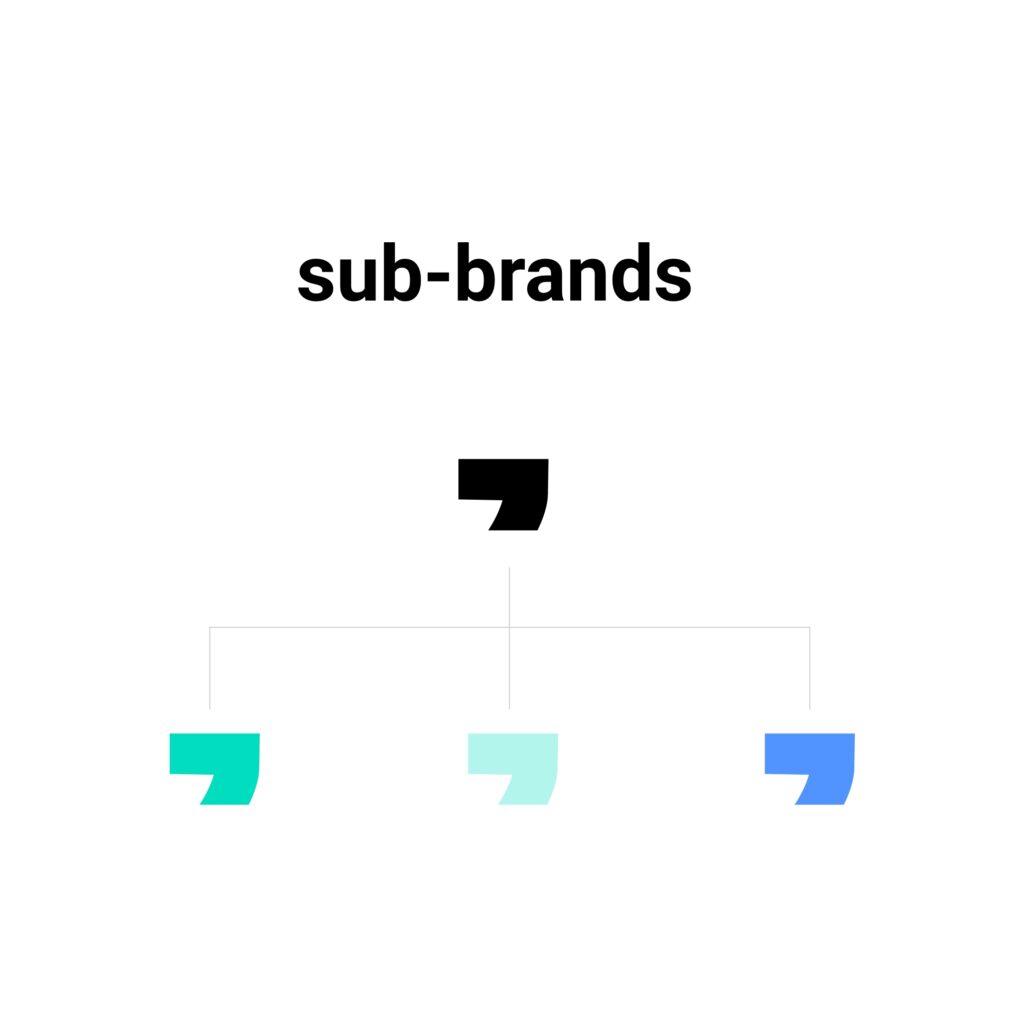Building an effective brand architecture is essential for the growth and success of businesses and organizations. How best to go about it depends on several factors, but at least keep it simple and clear. In this 5-part series, you will read all about the pros and cons of the most common types of brand architecture, complemented by telling examples.
 Do you know which brand architecture best suits your objectives? Could you use professional support in doing so? Then contact our specialists on the subject: greetje@brandstrategists.be or maxim@brandstrategists.be.
Do you know which brand architecture best suits your objectives? Could you use professional support in doing so? Then contact our specialists on the subject: greetje@brandstrategists.be or maxim@brandstrategists.be.
The concept
A sub-brand is a brand with its own identity and positioning in the market but which at the same time remains closely linked to the umbrella brand. The main brand remains the most important element, but other associations can be added. This allows your company to appeal to a new market segment that values other aspects of your product. All sub-brands below possess the same house style to which a slight variation is added for each sub-brand.Advantages of sub-brands
Because you maintain the link with the main brand, the recognisability of sub-brands plays to your advantage. The brand image of your main brand is transferred to your sub-brands, increasing their credibility and brand awareness. The strengths, values and overall message of your umbrella brand are also linked to the various sub-brands. Working with sub-brands gives you the freedom to launch a new brand and explore new markets without too much risk to the main brand.Disadvantages of sub-brands
The main disadvantage of sub-brands is that the link with the main brand makes it difficult to build a diverse product range. The main brand possesses certain values and associations that the new brands automatically adopt. As a result, companies with sub-brands are often limited to offering products and services within one product category.Example of sub-brands
Toyota Motor Corporation applies the strategy of sub-brands to serve different market segments. For instance, the main Toyota brand targets a broad audience through their compact and affordable cars while Lexus, their luxury brand, works with advanced technologies and high-end materials. To remain a globally strong player in the car industry, the Lexus sub-brand focuses on the high-end segment of the market while Toyota focuses on the mass market segment. Do you know which brand architecture best suits your objectives? Could you use professional support in doing so? Then contact our specialists on the subject: greetje@brandstrategists.be or maxim@brandstrategists.be.
Do you know which brand architecture best suits your objectives? Could you use professional support in doing so? Then contact our specialists on the subject: greetje@brandstrategists.be or maxim@brandstrategists.be.

